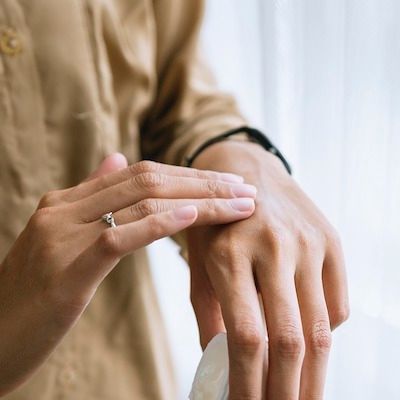Video
Current Role of Topical Therapy in Plaque Psoriasis
Matthew Brunner, MHS, PA-C, DFAAPA, and Lakshi Aldredge, MSN, ANP-BC, DCNP, discuss the current role of topical medications as the standard of care for initial therapy in plaque psoriasis.
Transcript:
Matthew Brunner, MHS, PA-C, DFAAPA: How do topical therapies fit into the management of plaque psoriasis in your clinic?
Lakshi Aldredge, MSN, ANP-BC, DCNP: They are important. At first, I talk with my patients about the pathogenesis of psoriasis and the family history, things that may cause it. We talk about how we grade severity and, perhaps, their risk of comorbidities, and then I move on to treatment options. I take them through what I call “the paradigm of treatment options.” Again, when you have localized disease, 1 or 2 spots of psoriasis, that’s when we have topical treatments that work well.
Topical steroids have been the mainstay of topical treatment for psoriasis for decades. You have a whole variety of different types of steroids in different strengths. You would not use a potent steroid, such as clobetasol or halobetasol, on areas of the skin that are thin—on the face, the genitals, or the shins, for example. You would use a lower potency or nonsteroidal treatment in those areas. But steroids are a nice topical treatment option for localized disease. I also give my patients topical treatments if they’re on a biologic or a systemic treatment. Even though they can be very excellently controlled with a systemic treatment, they may have a flare that requires a little extra attention. Topical steroids or topical treatments can work well for that.
In addition to topical steroids, there are topical nonsteroidals like calcineurin inhibitors (eg, pimecrolimus, tacrolimus). These agents are very helpful, especially in areas where you can’t use steroids, like the genitals or the face. Patients must be told that calcineurin inhibitor use initially can cause significant burning. That is actually a good thing, because it alerts the immune system and activates it. I warn patients that they’re going to have burning and itching, perhaps the first several times that they use the calcineurin inhibitors, and then that gets better over time. It is a nice option if you have significant psoriasis in areas where you cannot use topical steroids.
Another topical option is vitamin D analogues, such as calcipotriene formulated as a cream or ointment. Vitamin D analogues work very well as adjunctive treatment. They are also nonsteroidal, so they are safe to use on the face and the genitals. However, they can also be irritating and cause burning the first several times that they are used. I do warn patients about that. Sometimes, I will give them both a topical steroid and a vitamin D analogue, and I may have them use one in the morning and one in the evening. One thing you don't want to have them do is mix both of those together and use them at the same time, because that can actually kind of prevent the mechanism of action. It's important that you educate patients about how to use them properly.
Finally, keratolytics are thinning agents. They are topicals that actually thin the plaques, and this is very effective for folks who have really thick psoriasis plaques on their palms or soles of their feet. I have patients use a little urea cream on really thick plaques on the heels, and that can be helpful in thinning those plaques. Patients should be careful not to use these agents too often or on thinner plaques, because they could actually cause open wounds and ulceration if they are overused or used inappropriately. That's kind of the gamut on topical treatments, Matt. What other insights would you have about advising patients about topicals?
Matthew Brunner, MHS, PA-C, DFAAPA: I like to do salicylic acid-containing shampoos, particularly for the scalp. That's very helpful to help eat away those hyperkeratotic scales so that the topical therapy can penetrate through that horny layer of scales that's adherent to the exterior. With that class I and II corticosteroids, we're trying to be a little bit careful in older patients, since their skin thins as they get into their retirement years. Also, in other patients under 18 years of age, I start to tone those down into lower potencies, as well. But yes, I 100% agree, and I use a very similar approach to topical therapy.
Thank you for watching HCPLive® Peers & Perspectives®. If you enjoyed the content, please subscribe to our e-newsletters to receive upcoming Peers & Perspectives® and other great content right in your inbox.
Transcript edited for clarity.





